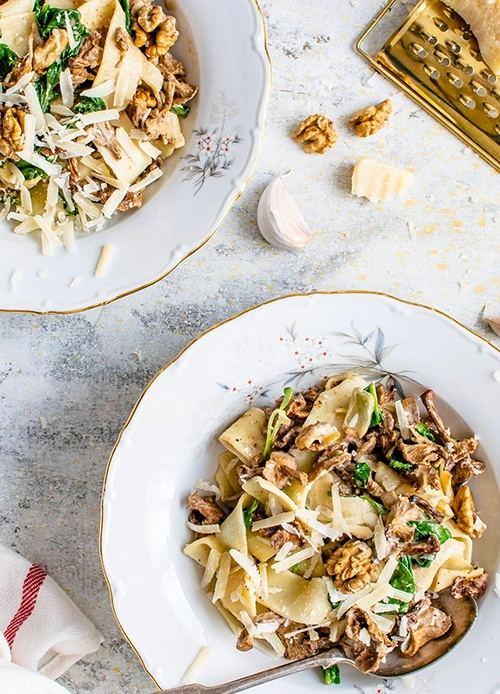

Top Health Benefits of Pasta con le Sarde You Need to Know
Pasta con le Sarde is a nutritionally rich dish that combines the healthy fats of olive oil and walnuts, the lean protein of sardines, and the antioxidant properties of fennel, garlic, and onions. Sardines are an excellent source of omega-3 fatty acids, which support heart health, brain function, and anti-inflammatory responses in the body. They’re also rich in calcium, vitamin D, and B12, making this meal particularly beneficial for bone health and energy metabolism. The fennel adds dietary fiber and essential minerals like potassium and folate, which aid digestion and cardiovascular function. Whole wheat pasta (if used) can further enhance the fiber and micronutrient content, making this dish a balanced choice that supports a wide range of health goals—from maintaining cholesterol levels to promoting satiety and gut health.
Recipe :
For 4 people
Enjoy this flavorful Sicilian classic packed with the tastes of the Mediterranean!
When preparing Pasta con le Sarde, the most important consideration is the freshness of the sardines—if you’re using fresh fish, make sure they are thoroughly cleaned and filleted to remove any bones. If using canned sardines, opt for those preserved in water or olive oil for the best flavor and nutrition. Cooking the fennel correctly is also crucial; it should be boiled until tender and then sautéed to bring out its natural sweetness, which balances the saltiness of the fish and the slight tang of the raisins. Toasting the walnuts lightly in a dry pan enhances their flavor and crunch. Be careful not to overcook the pasta—al dente texture not only improves the dish’s mouthfeel but also lowers its glycemic impact. For the final touch, grated cheese and optional breadcrumbs can be added, but keep in mind that these ingredients can raise the sodium and calorie content if overused. Timing and balance are key—prepare all ingredients ahead so the assembly is smooth and cohesive.

Pasta con le Sarde is most compatible with the Mediterranean Diet, DASH Diet, and High-Protein eating plans due to its blend of heart-healthy fats, lean protein, and antioxidant-rich vegetables. However, it is not suitable for ketogenic diets because of the relatively high carbohydrate content from pasta and raisins. It is also unsuitable for vegan or vegetarian diets in its original form due to the use of sardines, though it can be modified using plant-based alternatives. Individuals on a gluten-free diet should substitute regular pasta with gluten-free options to avoid adverse reactions. For those following a low-calorie plan, portion control is essential as nuts, cheese, and olive oil contribute a significant number of calories. Similarly, those on a paleo diet would need to omit the pasta altogether and possibly substitute it with spiralized vegetables. As a fish-based dish, it is ideal for pescatarians, but not appropriate for strict fasting regimens, especially those that avoid animal products or caloric intake during specific periods.
...